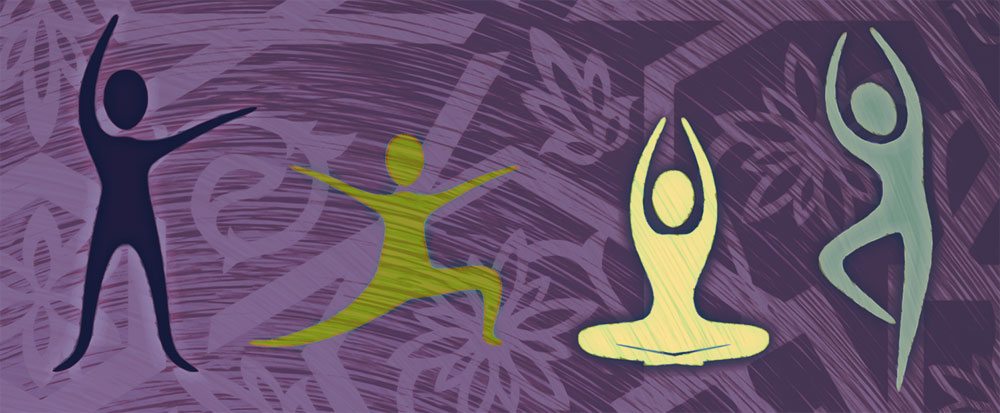Yoga Positions for Beginners

Mastering yoga positions for beginners can be helpful for the asana practitioner just starting out and the seasoned practitioner alike.
Basic yoga poses create a solid foundation for you to build upon in your practice. They are simple and easy to integrate with a well-established practice. Anecdotal and scientific information is readily available on the benefits of yoga—all of which extend to these basic and fundamental yoga poses. Such benefits include, but are not limited to, the cultivation of emotional and physical strength, flexibility, and resiliency.
The Nuts and Bolts of Beginner Yoga Positions
Basic yoga positions are commonly found in a typical yoga class and constitute the building blocks of a safe and well-rounded practice.
The best yoga positions for beginners are simple, yet challenging at the same time, and lend nicely to modifications. Whether you are practicing at a yoga studio or at home, remember to listen to your body, practice gentleness, modify a pose if necessary, and drop into a child’s pose at any point during your practice to recharge and focus your breath. If delving into a home-based practice, find an online yoga streaming service that offers instructional videos on basic yoga poses. A good way to approach doing these physical poses is to find a quiet and calm place in your home with little to no interruptions. Ideally, you want to hold the poses for 5-10 breaths, depending on the amount of time you have to devote to your practice. After you feel comfortable with the various poses, play around with sequences on your own, or find an online yoga streaming service that offers classes for beginners.
The best basic yoga positions are functional and address the fundamental motions of standing, balancing forward bends, and backbends. There are well over 200 yoga poses in the physical (asana) practice. F
Take a look at the following list of ten yoga positions for beginners; while this does not constitute an exhaustive list of basic poses, these poses can serve as a perfect starting point to ignite and/or strengthen your practice.
Balasana (Child’s Pose)
The queen of healing poses in the asana practice: lacing pressure at the spot between your eyebrows stimulates the parasympathetic nervous system, activating the relaxation response.
Give it a try!
Tadasana (Mountain Pose)
The foundation for all standing poses; with a lengthened spine and sturdy base, it provides an opportunity to engage the quadriceps and ground down through the feet, also supports improved posture.
Check it out!
Adho Mukha Svanasana (Downward-Facing Dog Pose)
Creating an inverted v-shape with your body for flexibility and strength in the arms and legs; stretches and strengthens the entire body.
Watch the video here.
Vriksasana (Tree Pose)
Great balancing pose for beginners; helps with focus and clarity, and learning to breathe while balancing.
Give it a try!
Virabhadrasana I (Warrior Pose 1)
Build strength and stamina in your practice, strengthen lower body and core; also serves as a gentle backbend.
Watch the video here.
Virabhadrasana II (Warrior Pose 2)
External hip opener opens inner thighs – a good building block for side asanas, including triangle and standing half-moon.
Check it out!
Trikonasana (Triangle Pose)
Starting pose that helps to stretch the sides of the waist, open the chest, and strengthen the lower body.
Give it a try!
Uttanasana (Standing Forward Fold Pose)
Foundation of sun salutations and provides a deep stretch to the hamstrings; brings fresh oxygen and blood to the brain, calming the nervous system and reducing stress.
Watch the video here!
Setu Bandha Sarvangasana (Bridge pose)
Counter to forward bends, a good beginner backbend that opens the chest, stretches the thighs, and strengthens the back body.
Check it out!
Savasana (Corpse Pose)
Usually done at the end of your practice, supports assimilating the benefits of your practice and mindfulness of breath and physical sensations.
Ultimately, it is important to meet your practice with an open mind and a willingness to accept where you are in that moment, without criticism, evaluation or judgment. Through focus and dedication to the practice of these basic yoga positions, one can cultivate and strengthen both the asana (physical) and mindfulness practice.
